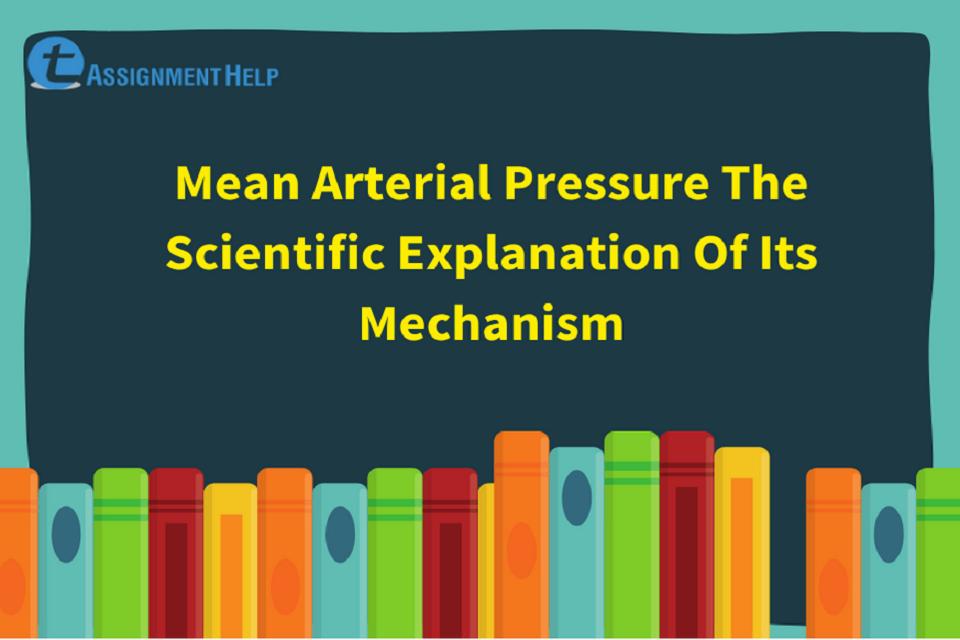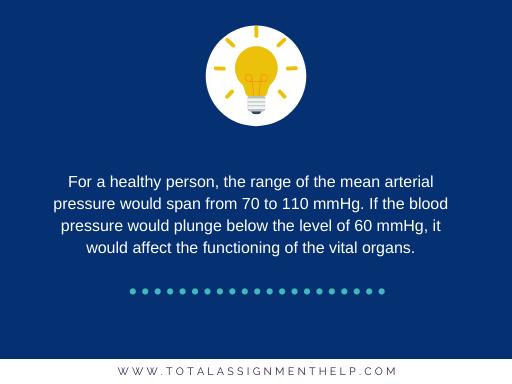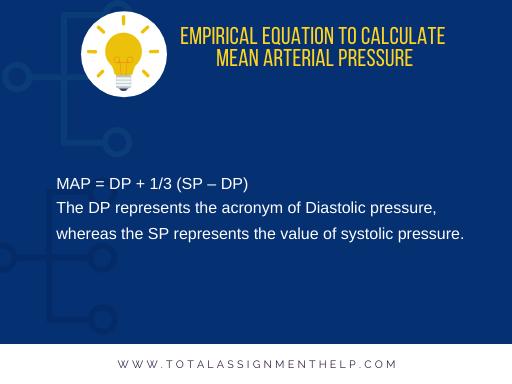Mean Arterial Pressure: The Scientific Explanation Of Its Mechanism

The term mean arterial pressure has a great significance among the people who are health conscious. No special medical knowledge is required to understand the concept behind the mean arterial pressure. If a person decides to consult a health specialist to follow a healthy way of life, this is the term which he would encounter multiple times in his daily life. Even a small change in the mean arterial pressure of the human body would lead to a serious medical condition.
The average taken for the numerical magnitude of blood pressure experienced on the arterial wall is termed to be the mean arterial pressure. The mean arterial pressure is also termed to be the average arterial pressure. For a healthy person, the range of the mean arterial pressure would span from 70 to 110 mmHg. If the blood pressure would plunge below the level of 60 mmHg, it would affect the functioning of the vital organs. The organs which would get affected by the variation in the mean arterial pressure abruptly are coronary artery, heart, kidney, brain, etc. The overall condition of a person’s health could be ascertained by checking the mean arterial pressure of a person.
The Mean Arterial Pressure is checked on an urgent basis if the person is suffering from the below listed medical conditions.
- The patient suffering from a head injury.
- The person with dissecting abdominal aneurysm.
- Heart patients who are being treated with vasodilator infusion.
- The person who is suffering from septic shock.
Every person should keep on checking his mean arterial pressure, even though he is not suffering from the above-mentioned conditions. The checking of the mean arterial pressure is one of the major steps in the periodical check-up of the body. As mentioned in the above section of this article, if the mean arterial pressure in the human body starts to variate on a substantial level, the tissues in it would get damaged.
Concepts behind the Mean Arterial Pressure
The whole circular system in the human body should be understood before getting into the topic of the mean arterial pressure. Let us look into the actual meaning of the term blood pressure. The major unit of blood circulation in the human body is its heart. It is the heart that maintains the circular system of humans from its birth to is death. If the blood fails to reach a particular organ or the tissue, the place would witness a heavy rate of cell damage. It is the blood that carries the required oxygen and nutrients to the different parts of the body. The blood doesn’t flow freely throughout the body and there are specific veins and arteries which would facilitate its movement. Every moment, hearts keep on pumping a certain amount of blood through the veins and arteries. It is by the repeated action of the heart that the oxygenated blood from the lungs is brought to the required portions of the cells.
Since the blood is in liquid form, it contains pressure over the blood vessels which contain it. The pressures would be different at both the instance of pumping and idle state. The blood pressure could be classified under the category of hydrostatic pressure. Any matter in the form of liquid would exert pressure on the substance which comes on its way. This principle could be traced to the stream of physics. A certain level of pressure is being exerted by the blood on the walls of blood vessels which is generally termed as blood pressure.
If mentioned purely in biological terms, the mean arterial pressure could be defined as the average of the numerical values of systolic and diastolic pressure. It is the resistance put forward by the vascular system and the cardiac output that would determine the magnitude of mean arterial pressure. It is by finding the product of both the stroke volume and heart rate that the value of cardiac output is determined. The variables of Ventricular inotropy and the preload determines the value of stroke volume. The preload is influenced by the conformity of the vascular network and volume of the blood. The most crucial factor is the volume of blood, which if increases, would create a positive impact on the numerical values of stroke volume, cardiac output, and preload. Though it should be noted that the variable of afterload is in inverse proportional relation with the stroke volume. The value of the heart rate is impacted by factors like lusitropy, dromotropy, and chronotropy.
It is the cross-section area or the radius of the blood vessel that could determine the value of systemic vascular resistance. If the radius of the blood vessel would get decreased by any form of deposits in it, the magnitude of vascular resistance would increase. The vascular resistance would also get affected by the viscosity of the blood. Though it has been observed that the increase in viscosity has caused only a nominal charge on the value of systemic vascular resistance.
The empirical equation to estimate the value of mean arterial pressure is provided in the below section.
MAP = DP + 1/3 (SP – DP)
Or
MAP = DP + 1/3 (PP)
The DP represents the acronym of Diastolic pressure, whereas the SP represents the value of systolic pressure. The above-provided expression is majorly used in a lot of the healthcare centers to calculate the value of mean arterial pressure by quick means in a very accurate way.
Issues that should be focussed upon
A minimum of 60 mmHg mean arterial pressure is required to sustain the normal functioning of the body organs. The biological condition of infarction and ischemia would occur if the low level of Mean arterial pressure would sustain in the body. If the mean arterial pressure would plunge significantly, the normal circulation through the cardiovascular system would get hampered. The person could faint by the medical condition and there is a high possibility that he would die because of the neuronal malfunction. The biological design of human beings is such that a certain level of arterial pressure is sustained through various features. This mechanism is very crucial for the proper working of all vital organs in the human body.
Cellular
It is through the appropriate level of the mean arterial pressure that the connection between the autonomic nervous system and the renal system is being connected via the cardiovascular system. In the posterior section of this report, we have discussed the whole mechanism in a much more detailed manner.
The relevant organ system in the background of mean arterial pressure
It is by considering the measure of system cardiac resistance and the cardiac output that the mean arterial pressure of the cardiovascular system is estimated. It is by considering the parameter of preload, intervascular volume, heart rate, myocardial contractility, and conduction velocity that the Cardiac output is devised out. It is by the periodic dilation and vasoconstriction that the systemic vascular resistance is estimated.
By the system of renin-angiotensin-aldosterone, the factor of mean arterial pressure is sustained to a particular level by the renal system. The whole process would end up in the secretion of the aldosterone hormone. The secretion of it would increase the pace of the sodium reabsorption from the convoluted tubules present of the kidneys which would consecutively increase the volume of plasma.
The baroreceptors present in the autonomic nervous system also plays a very crucial role in the sustenance of the level of mean arterial pressure. The baroreceptors are majorly situated at the aortic and sinus arch. The autonomic nervous system thus retains the potential to change the level of systematic vascular resistance and cardiac output that would conclusively help to maintain the mean arterial pressure at the normal level.
Mechanism
It has already been provided in the above section of this report that the cardiac output and vascular resistance plays a crucial role in the level of the mean arterial pressure. The cross-sectional area of the blood vessels determines the magnitude of systemic vascular resistance. It is the autonomic nervous system, local mediators, and the level of deposition which would influence the radius of the blood vessels. The inner wall of the vascular system is composed of endothelial cells. It is these cells that would respond to the vasoactive materials and create the periodic constriction and dilation to facilitate the flow of blood.
If the level of the mean arterial pressure would go beyond the ideal level, the extra pressure on the lining of the vascular system would induce the generation of nitric oxide. The smooth muscle cells in the vascular system get permeated with the nitric oxide and persuade the production of guanylyl cyclase. The whole process would bring about the dephosphorylation of the GTP to cGMP. It is the cGMP which would work as the messenger for the process of dilation and contraction movements in the blood vessels. There also some compounds like prostaglandins and bradykinin which would result in the movement inside the vascular lining.
The impact of the endothelin on the vascular walls is quite opposite to the influence of nitric oxide. If the meant arterial pressure would plunge to a considerable level, the production of endothelin would initiate in the endothelial cells. When the compound enters into the smooth vascular muscles, the formation of IP3 and calcium release occurs from the sarcoplasmic reticulum by the combination of Gq coupled receptor and ET-1 receptors. The whole process would result in the contraction of the blood vessels.
We have discussed in the former section of this report that the autonomic nervous system plays a vital role in the maintenance of the ideal mean arterial pressure by the medium of baroreceptor reflex. It is the negative feedback provided by the baroreceptors present at the aortic arch and carotid sinus that would maintain the ideal level of mean arterial pressure. The message is sent to the nucleus tactus solitarius via baroreceptors. The nucleus tactus solitarius is situated at the brainstem and the communication is done via glossopharyngeal nerve which is also termed as cranial nerve IX. The decision to increase or lower the level of Mean arterial pressure would take place in the nucleus tractus solitarius.
The stimulation from the baroreceptors would increase considerably when the level of mean arterial pressure would increase to a considerable level. It is by increasing the parasympathetic output and decreasing the sympathetic output that the baroreceptor stimulation is increased. The myocardial chronotropy and dromotropy would get decreased by the increase in the parasympathetic output. The whole process is being made possible by the influence made by the acetylcholine on the receptors of M2 muscarinic located in the myocardium. The M2 receptors are found in the Gi-coupled state that would facilitate the generation od adenylate cyclase eventually resulting in the lowering down in the level of cAMP. The whole process would make a reducing impact over the level of cardiac output which eventually ends up in the reduction of mean arterial pressure.
Though if the instance of reduces mean arterial pressure occurs, the decrease in the baroreceptor stimulation would take place by the increase in sympathetic tone and increase in the parasympathetic tone. Similar to the instance discussed above, the elevated level of the sympathetic tone would elevate the level of lusitropy, inotropy, chronotropy, and dromotropy by the impact made on the betal adrenergic receptors by the norepinephrine and epinephrine. Likewise the M2 receptors, the Betal receptors are also in the G coupled state, which would facilitate the production od adenylate cyclase. The production of adenylate cyclase would pave the way for the surge in the level of cAMP.
In the instance of severe hemorrhage, psychological stress, and exercise the level of sympathetic tone would increase.
It is by the manipulation of the plasma volume that the renal system would help in the regulation of mean arterial pressure. The level of plasma in the blood creates a direct impact on cardiac output. The release of renin happens when the renal perfusion decreases causing the instance of the renin-angiorensin-aldosterone cascade. The condition would compel the body to increase the rate of sodium reabsorption.





